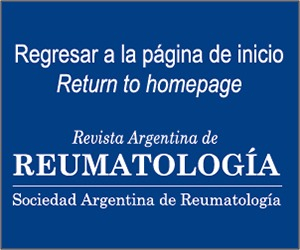Usefulness of capillaroscopy in scleroderma
Abstract
Systemic sclerosis (SSc) is a connective tissue disease characte-rized by autoimmune reactivity, progressive generalized vascular dysfunction and fibrosis of the skin and internal organs associa-ted with the production of specific antibodies. In recent years the nailfold capillaroscopy has proven to be an useful and realible tool for the initial evaluation of Raynaud’s phenomenon and connective tissue diseases specially scleroderma, also this technique has been included in the diagnostic criteria of scleroderma, which demons-trate the usefulness of this technique. In turn, the capillaroscopy plays an important role in the evaluation of systemic involvement, transition of the disease, management and mortality predictor of scleroderma, aspects that will be discussed in this review.References
I. Cutolo M, Sulli A, Pizzorni C, Paolino S, Smith V. Systemic sclerosis: markers and targeted treatments. Acta Reum Port. 2016;41:18–25.
II. Gabrielli A, Avvedimento E, Krieg T. Scleroderma. N Eng J Med. 2009;360:1989–2003.
III. Gottschalk P, Vásquez R, López P, Then J, Tineo C, Loyo E. Esclerodermia en el Caribe: características en una serie de casos dominicana. Reum Clin. 2014;10(6):373–9.
IV. Rosa J, Soriano E, Narvaez-Ponce L, Del Cid C, Imamura P, Cataggio L. Incidence and prevalence of systemic sclerosis in a healthcare plan in Buenos Aires. J Clin Rheumatol. 2011;17:59–63.
V. Scolnik M, Lancioni E, Saucedo C, Marin J, Sabelli M, Bedran Z, et al. Systemic sclerosis in Argentina: evaluation of a large cohort from a single centre and comparison with other international series. Clin Exp Rheumatol. 2014; 32(6 Suppl 86):S-94-7.
VI. Raynaud M. Thése de Médicine: De l’asphyxie locale et de la gangrene des extremités. Paris: Leclere. 1862;
VII. Ríos C, Maldonado G. Manual de Capilaroscopia [Internet]. Primera Ed. Guayaquil: Centro de Reumatología y Rehabilitación; 2016. 103 p. Available from: http://panlar.org/es/recursos_post_type/ manual-de-capilaroscopia/
VIII. Maricq H, Leroy E, D’Angelo W. Diagnostic potential of in vivo capillary microscopy in scleroderma and related disorders. Arthritis Rheum. 1980;23:183–9.
IX. Maricq H. Widefield capillary microscopy technique and Rating Scale for abnormalities seen in Scleroderma and Related Disorders. Arthritis Rheum. 1981;9:1159–65.
X. Hou M, Huang S, Wang C, Tseng L Lo, Chen Y. A computerized system of nail-fold capillaroscopy for dry eye disease diagnosis. Multidimens Syst Signal Process. 2012;23(4):512–24.
XI. Lefford F, Edwards J. Nailfold capillary microscopy in connective tissue disease: quantitative morphological analysis. Ann Rheum Dis. 1986;45:741–9.
XII. Hofstee H, Serné E, Roberts C. A multicentre study on the reliability of qualitative and quantitative nail-fold videocapillaroscopy assessment. Rheumatology. 2012;51(4):749–55.
XIII. G rassi W, Del Medico P. Atlas of Capillaroscopy. Milan: Edra Medical Publishing & New Media; 2004.
XIV. Cutolo M, Sulli A, Pizzorni C, Accardo S. Nailfold videocapillaroscopy assessment of microvascular damage in systemic sclerosis. J Rheumatol. 2000;27(155):60.
XV. Cutolo M, Grassi W, Cerinic MM. Raynaud's Phenomenon and the Role of Capillaroscopy. 2003;48(11):3023–30.
XVI. Cutolo M, Pizzorni C, Sulli A. Capillaroscopy. Best Pr Res Clin Rheumatol. 2005;3(437–52).
XVII. G REC - Grupo de Trabajo para el Estudio de la Capilaroscopia. Capilaroscopia. España; 2015.
XVIII. S ulli A, Sechi M, Pizzorni C, Cutolo M. Scoring the nailfold microvascular changes during the capillaroscopic analysis in systemic sclerosis patients. Ann Rheum Dis. 2008;67:885–7.
XIX. Smith V, De Keyser F, Pizzorni C, Van Praet J, Decuman S, Sulli A, et al. Nailfold capillaroscopy for day-to-day clinical use: construction of a simple scoring modality as a clinical prognostic index for digital trophic lesions. Ann Rheum Dis. 2011;70:180–3.
XX. Masi A, Rodnan G, Medsger JT, Altman R, D’Angelo W, Fries J. Preliminary criteria for the classification of systemic sclerosis (scleroderma). Arthritis Rheum. 1980;23:581–90.
XXI. L onzetti L, Joyal F, Raynauld J. Updating the American College of Rheumatology preliminary classification criteria for systemic sclerosis: addition of severe nailfold capillaroscopy abnormalities makedly increases the sensitivity for limited scleroderma. Arthritis Rheum. 2001;44(735):6.
XXII. Hudson M, Taillefer S, Steele R, Dunne J, Johnson S, Jones N. Improving the sensitivity of the American College of Rheumatology classification criteria for systemic sclerosis. Clin Exp Rheumatol. 2007;25:754–7.
XXIII. Ziswiler H, Urech R, Balmer J, Ostensen M, Mierau R, Villiger P. Clinical diagnosis compared to classification criteria in in a cohort of 54 patients with systemic sclerosis and associated disorders. Swiss Med Wkly. 2007;137:586–90.
XXIV. L eRoy E, Black C, Fleismajer R, Jabolonska S, Krieg T, Medsger T. Scleroderma (systemic sclerosis): classification, subsets and pathogenesis. J Rheumatol. 1988;15:202–5.
XXV. LeRoy E, Medsger TJ. Criteria for the classification of early systemic sclerosis. J Rheumatol. 2001;28(1573):6.
XXVI. A vouac J, Fransen J, Walker U. Preliminary criteria for the very early diagnosis of systemic sclerosis: results of a Delphi Consensus Study from EULAR Scleroderma Trials and Research Group. Ann Rheum Dis. 2011;70:476–81.
XXVII. H oogen V den. Classification Criteria for Sistemic Sclerosis. Arthritis Rheum. 2013;65:2737–47.
XXVIII. K oenig M, Joyal F, Fritzler MJ, Abrahamowicz M, Grodzicky T, Raymond Y, et al. Autoantibodies and Microvascular Damage Are Independent Predictive Factors for the Progression of Raynaud’ s Phenomenon to Systemic Sclerosis A Twenty-Year Prospective Study of 586 Patients , With Validation of Proposed Criteria for Early Systemic Sclero. 2008;58(12):3902–12.
XXIX. S pencer-Green G. Outcomes in primary Raynaud phenomenon: a metanalysis of the frequency, rates, and predictors of transition to secondary diseases. Arch Intern Med. 1998;(595–600).
XXX. Sulli A, Pizzorni C, Smith V, Zampogna G, Ravera F, Cutolo M. Timing of Transition Between Capillaroscopic Patterns in Systemic Sclerosis. 2012;64(3):821–5.
XXXI. Caramaschi P, Canestrini S, Martinelli N, Volpe A, Pieropan S, Ferrari M, et al. Scleroderma patients nailfold videocapillaroscopic patterns are associated with disease subset and disease severity. Rheumatology. 2007;46:1566–9.
XXXII. Riccieri V, Vasile M, Iannace N, Stefanantoni K, Sciarra I, Vizza C, et al. Systemic sclerosis patients with and without pulmonary arterial hypertension: a nailfold capillaroscopy study. Rheumatology (Oxford). 2013;52 (8)(1525):8.
XXXIII. Matucci-Cerinic M, D’Angelo S, Denton C, Vlachoyannopoulos P, Silver R. Assessment of lung involvement. Clin Exp Rheumatol. 2003;21(29):19–23.
XXXIV. Medsger TJ, Bombardieri S, Czirjak L, Scorza R, Della Rossa A, Bencivelli W. Assessment of disease severity and prognosis. Clin Exp Rheumatol. 2013;21(29):42–6.
XXXV. Sambarato D, Sambarato G, Zaccara E, Maglione W, Polosa R, Afeltra A, et al. Nailfold videocapillaroscopy micro-haemorrhage and giant capillary counting as an accurate approach for a steady state definition of disease activity in systemic sclerosis. Arthritis Res Ther. 2014;16(5):462.
XXXVI. Khanna D, Gladue H, Channick R, Chung L, Distler O, Furst D. Recommendations for screening and detection of connective tissue disease-associated pulmonary arterial hypertension. Arthritis Rheum. 2013;65(3194):201.
XXXVII. Sebastiani M, Manfredi A, Colaci M, D’Amico D, Malagoli V, Giuggioli D, et al. Capillaroscopic Skin Ulcer Risk Index: A New Prognostic Tool for Digital Skin Ulcer Development in Systemic Sclerosis Patients. Arthritis Rheum. 2009;61(5):688–94.
XXXVIII. Cutolo M, Herrick AL, Distler O, Becker M, Beltran E, Carpentier P, et al. Nailfold Videocapillaroscopic Features and Other Clinical Risk Factors for Digital Ulcers in Systemic Sclerosis A Multicenter, Prospective Cohort Study. Arthritis Rheumatol. 2016;68(10):2527–39.
XXXIX. Cutolo M, Sulli A, Sechi M, Olivieri M, Pizzorni C. The contribution of capillaroscopy to the differential diagnosis of connective autoimmune diseases. Best Pr Res Clin Rheumatol. 2007;21:1093–108.
XL. K ayser C, Sekiyama J, Próspero L, Camargo C, Andrade L. Nailfold capillaroscopy abnormalities as predictors of mortality in patients with systemic sclerosis. Clin Exp Rheumatol. 2013;31(76):103–8.
XLI. Van den Hoogen F, Khanna D, Fransen J, Johnson SR, Baron M, Tyndall A, et al. 2013 classification criteria for systemic sclerosis: an American college of rheumatology/European league against rheumatism collaborative initiative. Ann Rheum Dis. 2013 Nov 1;72(11):1747–55.
Copyright (c) 2016 Argentine Journal of Rheumatology

This work is licensed under a Creative Commons Attribution-NonCommercial-NoDerivatives 4.0 International License.










